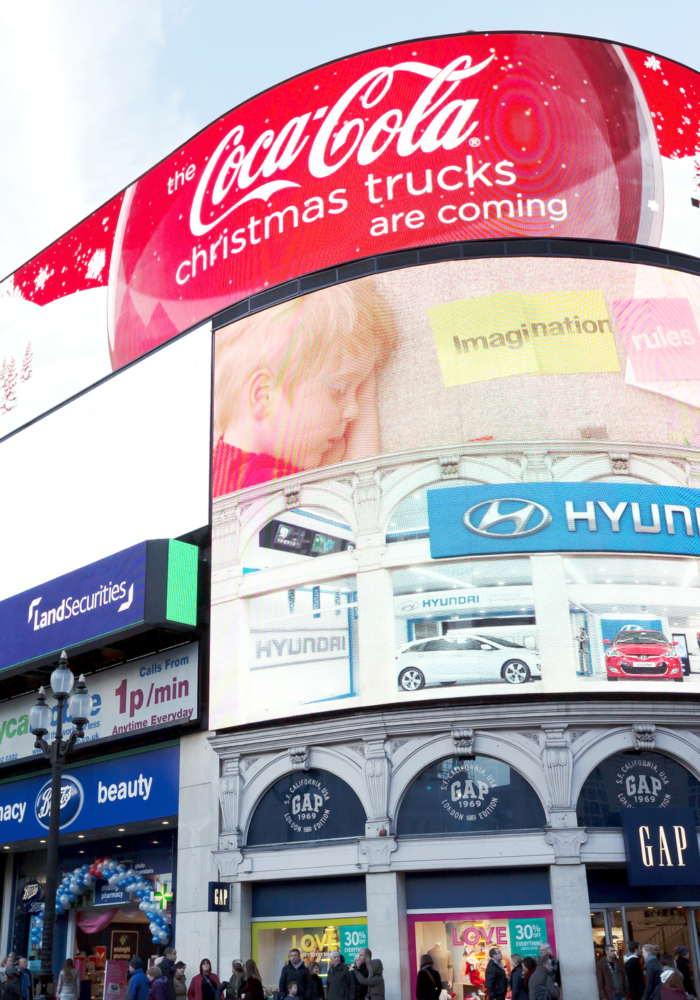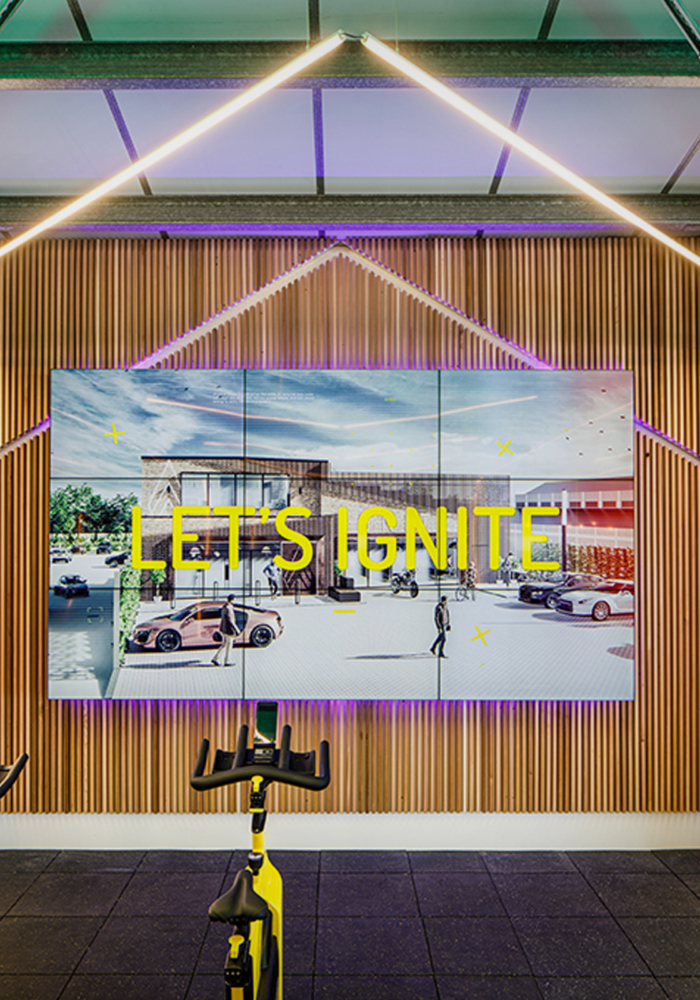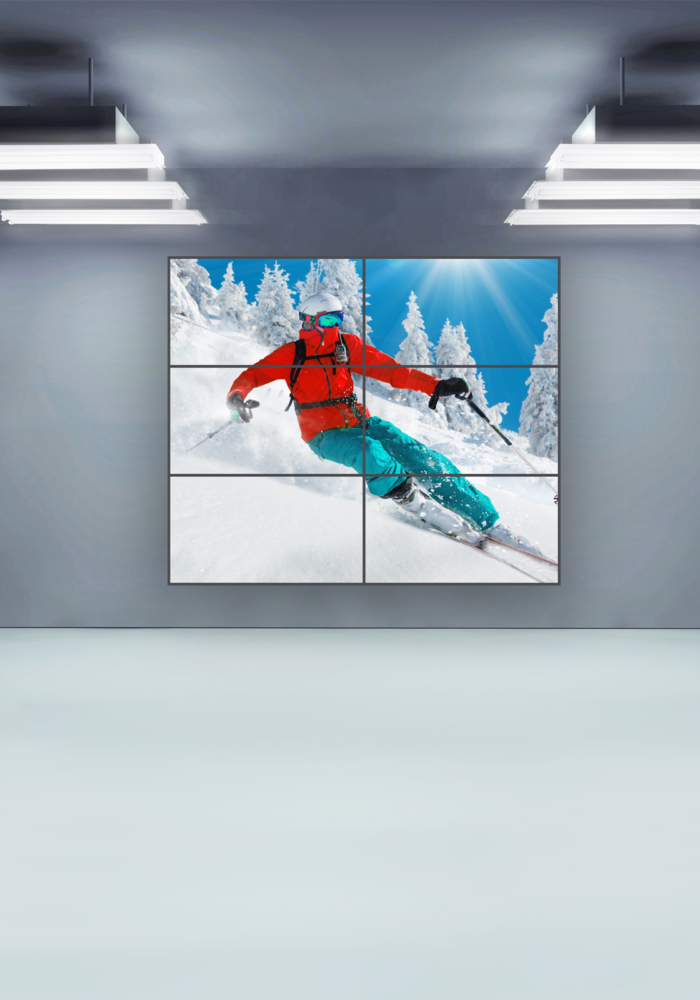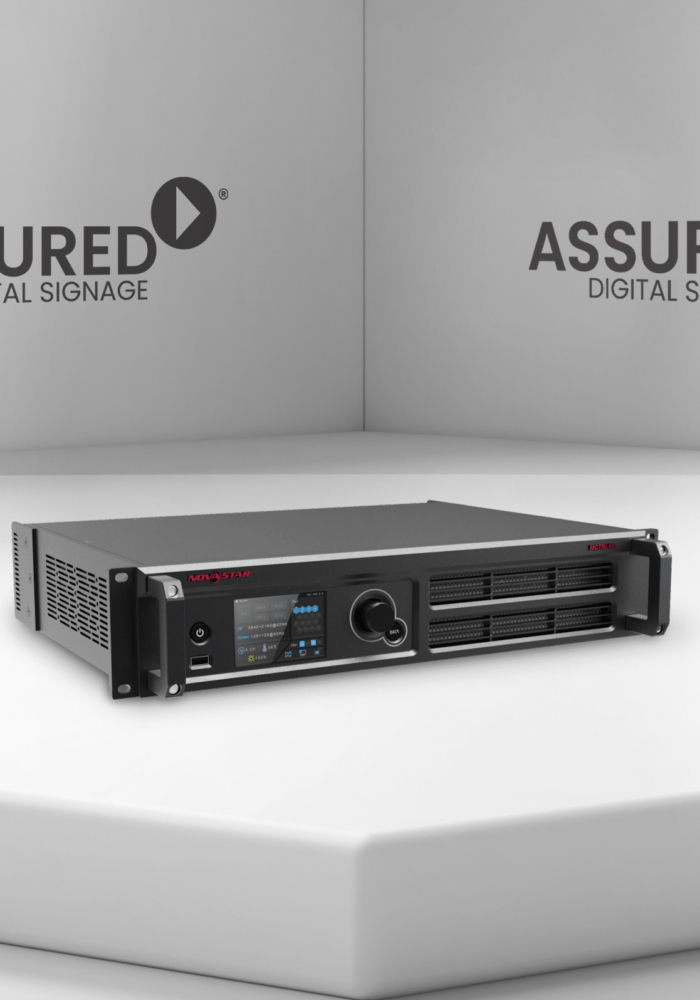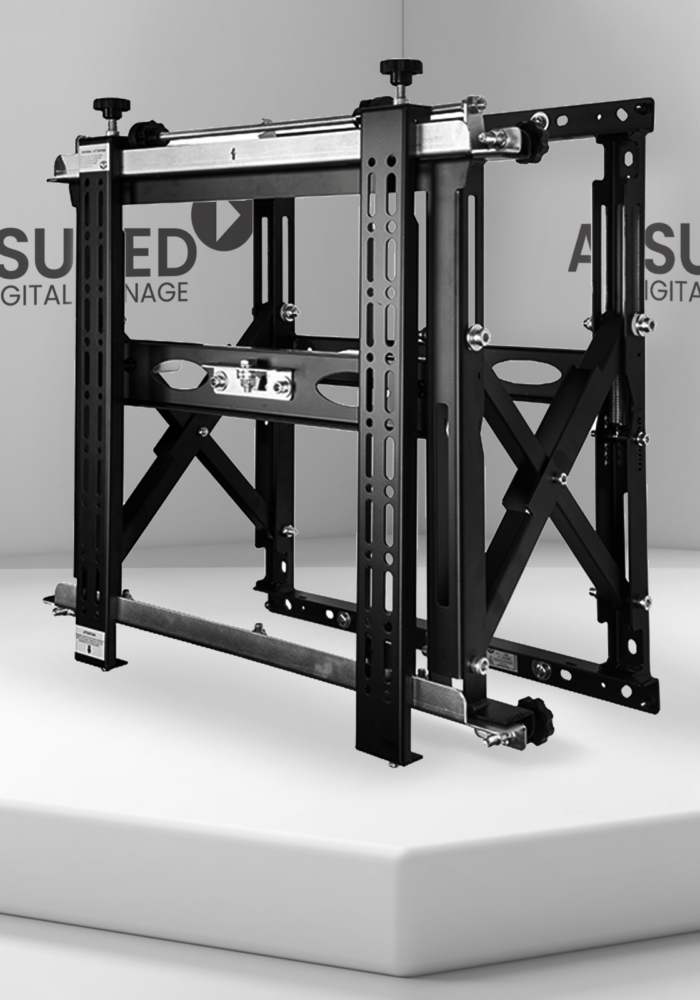What is a video wall?
A video wall refers to the combination of individual LCD screens (for more information about LED technology, please see the LED video wall page). Typically, this involves arranging multiple screens of the same size and model in a linear fashion. For instance, placing two 49” screens side by side creates a 1×2 video wall, which can be set up in either portrait or landscape orientation.
Alternatively, video walls can be created using a more random arrangement, with screens positioned in a haphazard fashion. While this may create an impressive visual impact, it’s important to consider that it also adds complexity to content creation, publishing, and installation processes.
Why do I need a video wall?
Video walls are commonly used to create the illusion of a single large screen, pulling in content from multiple sources and displaying it at your preferred size on a large display. These screens have narrow bezels to minimize their presence in the overall spectacle when joined together. While you could opt for large screens, our largest offering being a massive 100″ 24/7 commercial display, it is more convenient to handle smaller format specialist video wall displays, typically ranging from 48 to 56 inches, especially when it comes to transportation and installation.
However, setting up a video wall is not as simple as placing screens next to each other. It requires additional hardware for content publishing and management across the wall, as well as taking the time to think about the content itself. Where this is coming from and how it should be presented on the video wall.
What are the essential components for creating a video wall?
So, you’re familiar with the concept of a video wall and why it’s important, but what exactly do you need to ensure a successful deployment? There are a few key components that you must consider and get right to effectively implement a video wall.
Hardware
To start with, you’ll need a suitable screen, and fortunately, there are screens specifically designed for this purpose. Typically, they come in a range of sizes. If you have a specific wall canvas size in mind, you’ll need to check the panel size of the screen and determine how many screens you’ll require to fill the space. Remember, you have the flexibility to use them in either portrait or landscape orientation. It’s also advisable to purchase a couple of spare panels, as manufacturers occasionally change sizes, and the last thing you want is to compromise your entire video wall due to a faulty screen with no available replacement.
The second part of the hardware equation is a suitable media player or, more commonly, a video wall controller, also known as an advanced video wall processor. This controller enables you to dictate how and where your content is displayed, whether on a single screen or the entire wall. Typically, these controllers consist of several component parts, which may vary depending on each project. However, they usually include a video wall controller, a preview board, and various inputs/outputs tailored to the source feed, such as HDMI input/output. Other hardware requirements will depend on the origin of your content. It could be a digital signage media player, a feed from a security camera or a coaxial cable, and you may already have some of these components in place.
Software
Fortunately, most video wall controllers come equipped with their own user-friendly control software. This intuitive software allows you to effortlessly:
- Select and display content sources in real time on your video wall.
- Easily adjust the appearance of the content, including cropping, zooming, and scaling.
- Create dynamic sequences with smooth transitions, similar to a presentation, which can be scheduled as desired.
In addition to this, depending on your content sources, you may also require other software platforms. For example, if you are using a digital signage feed, Content Management Software is typically used. At Assured Digital Signage, we work with multiple CMS vendors and can recommend the best one based on your specific requirements.
Quality content
Quality content is not solely defined by flashy visuals from a professional agency. Ultimately, it depends on the intended application. Control room video walls, for example, prioritise reliability and content clarity over entertainment value.
On the other hand, in retail or DOOH environments, content aims to captivate shoppers and passers-by, reinforcing brand awareness and increasing the likelihood of making a sale. It’s important to consider the various content sources and plan your video wall accordingly. From the outset, think about your audience, project objectives, and all content sources. Make sure to talk to Assured Digital Signage about “Content Design & Strategy” to ensure your objectives are met on the first try.
Professional Installation
Often overlooked and undervalued, it’s important to avoid the misconception that simply checking all the boxes will result in a perfect video wall. Installing video walls can be a challenging task, involving intricate wiring and precise screen positioning. Investing in high-quality video wall screens with thin bezels will be futile if there are gaps between the panels in your video wall.
At Assured Digital Signage, we have a skilled team of video wall installers who can provide specialised full-service access video wall mounts. Our mounts not only give your project the professional finish it deserves but also ensure that your video wall is future-proofed, allowing for quick and easy access.
Conclusion
In conclusion, the installation of a video wall offers numerous advantages that greatly enhance communication, engagement, and collaboration in various settings. Video walls have become a versatile and powerful display solution, captivating audiences with high-quality visuals and providing multisource visualization in control rooms. With scalability, flexibility, and the potential to create interactive customer experiences, video walls cater to the ever-evolving needs of businesses and organizations. As technology advances, video walls will undoubtedly remain at the forefront of innovative display solutions, making them a valuable investment for those seeking to elevate their visual communication and overall user experience. So, when planning your video wall installation, make sure to consider all the essential components, including hardware, software, quality content and professional installation. This will ensure that you have a top-performing LCD video wall that effectively delivers your message and meets your project objectives.
